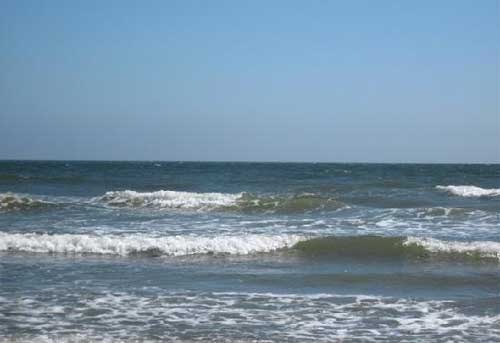
GATEWAY TO AMERICA: THE GULF OF MEXICO
By Bob Jamison
Historians stagger with the intrigue and mysteries of the Gulf of Mexico. The bottom of which still remains the secrets of many ancient sailors, legendary storms, and the violent days of Nazi submarines. But none could be more exciting than the story of the first Europeans that braved the wilds of this country from Florida to Arizona and then on to Mexico.
It was around 1528, or just a scant thirty six years after Columbus’ trip of discovery, that Cabeza de Vaca came ashore near what we know as Tampa Bay. Of course, in that period he searched many shore line bays and estuaries. No doubt, the bountiful food harvest was a gift of life which came from the beautiful waters of the gulf.
Subsequently, there came other brave discoverers such as de Soto who meandered inland plus navigated the shores of the great water from Florida to Mexico. And the ramblings of Coronado that told tales of similar episodes with native Indians and unbelievable hardships.
Nowadays, while we wade the sandy beach waters, we might not give a lot of thought of such historic events. Actually, we might not spend much time considering conditions created by current events of mankind or the abundance of food and recreation it offers each of us.
Boating ranks among the highest investments in recreational enjoyment. Much of this is evident by the ‘red sails in the sunset’ or the gentle purring of formidable sea craft. Also, it is most rewarding to see the expression of a child’s face that relates to the thrill of him catching his first fish. With a lifetime enjoying the sport, I still have that thrill whether I release the prize back into the wild waters of the gulf or releasing it into the frying pan or on the grill.
Much has been written of the “by-catch” by the also adventurous commercial fishermen who are there to place tons of fresh fish into our markets today which adds to a healthy diet. Admittedly, there is a controversy concerning the by-catch in the trawls. Many of the prize fish of our sporting adventure meet their demise in the by catch. Only in fairly recent years, an agreement was placed into law that trawls pulled along the bottom or in the gulf should be equipped with TEDs. Turtle Extruder Devices are designed to allow sea turtles to free themselves from the trawls by an ingenious trap door window of escape.
In just a matter of a few years, CCA has been responsible, in part, to protect the near demise of a fantastic fish, the Red Drum (Red Fish) by disallowing netting. That has now been corrected by law for the most part. The same is true with several species. But over the horizon of the blue water waves and the imagined shoreline tracks of Cabeza de Vaca, there has sprung this organization of conservation minded boatmen and fishermen. The organization now numbers over 96,000 members and is called COASTAL CONSERVATION ASSOCIATION. In those few years it now has 17 state chapters. It grew from an idea of broad thinking sports folks around Houston, Texas called Gulf Coast Conservation Association. It then progressed to CCA.
From that humble beginning of just over 30 years ago, it includes state chapters with like ideals ranging in distance from the Rio Grande border of Texas/Mexico to Main. Please join me and others in belonging to CCA. The Florida chapter is located in Orlando, P.O. Box 568886, Zip 32856-8886. Or you may email direct to CCA by www. Ccaflorida.org. Again, you may email headquarters at www.joincca.org/CCA%20story.html.
One of the recent accomplishments of CCA is its contribution of $700,000 for the construction of a state-of-the-art marine science lab. There, studies of cause and effect in matters concerning our valuable gulf waters will be foremost.
Naturally, when two opposing entities meet, the side that convinces the powers that be with facts and proof will usually prevail. In order to accomplish this, a detail history and accounting of countless data is included. That’s where the marine science lab applies. Weather, water quality, algae bloom (red tide) and of course, the effect of reasonable or over harvesting of the species is studied. With that information representatives in Washington, D. C. and various state departments will enact laws that protect and preserve these valuable coastal recourses.
All of us that enjoy the beauty and coastal abundance, especially in the warm waters of the Gulf of Mexico, should think about what we can do to ensure that excellent seafood remains on our shelves and in our fine restaurants. We each can do our part to support reasonable conservation measures that will perpetuate the coparcenaries of life that Cabeza de Vaca left behind.